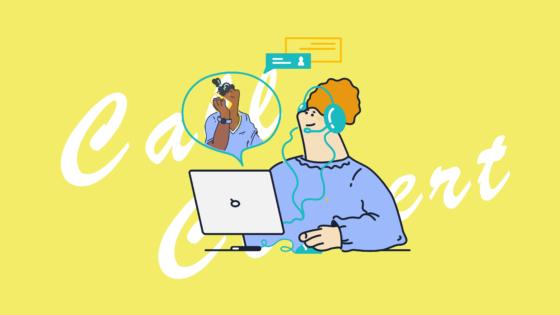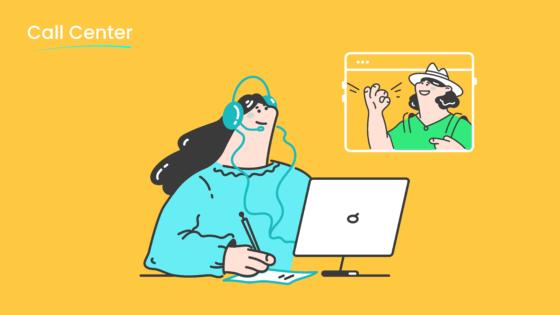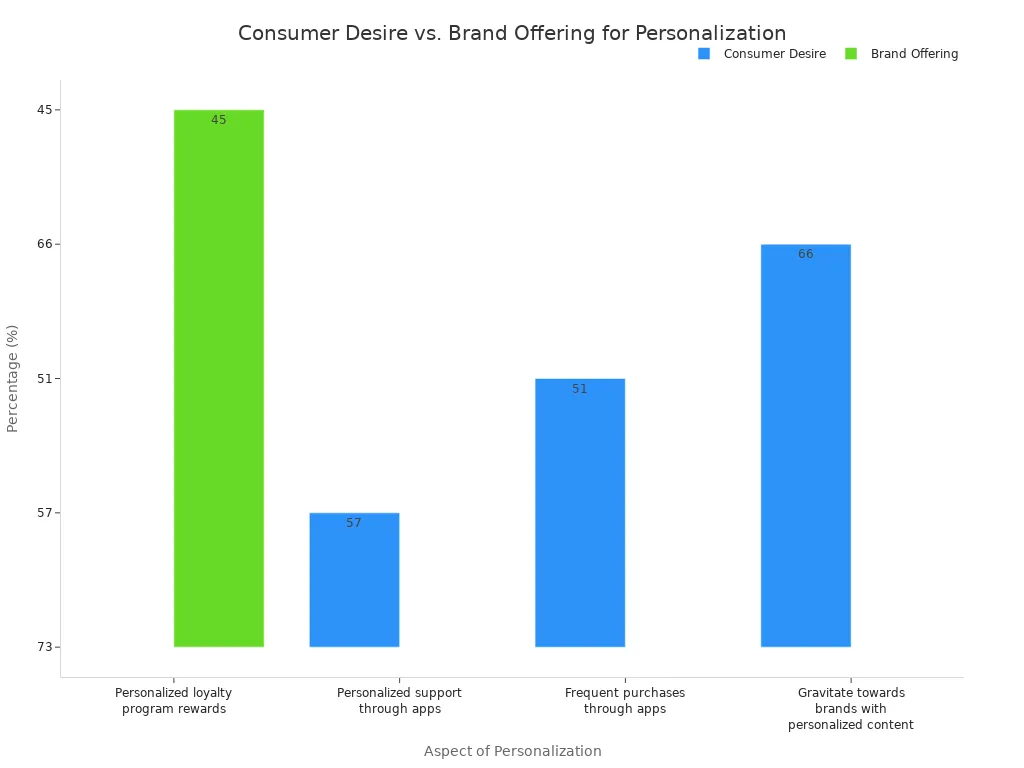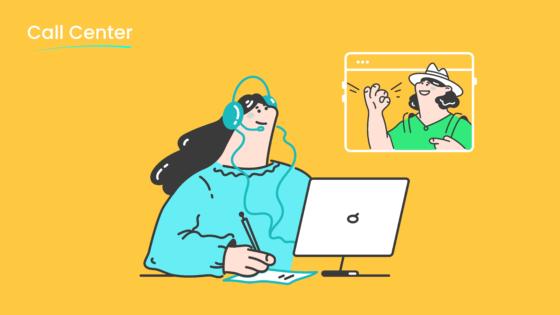Client Service vs Customer Service Explained

Choosing between client service and customer service defines your business strategy. Client service builds personalized, long-term relationships for a dedicated client. In contrast, customer service offers efficient, transactional customer support. This distinction is a key difference in the client vs customer approach. Your choice shapes operations, goals, and success, especially when 32% of customers will leave a brand after just one bad experience.

This guide helps you identify who you serve. You can then align your service model for maximum impact, whether that involves a Sobot call center for a specific client or Sobot AI for broader customer interactions. Understanding what is a client service relationship is the first step.
THE CORE OF CLIENT VS CUSTOMER
To master the client vs customer dynamic, you must first understand the fundamental identity of who you serve. The distinction shapes every interaction, from initial contact to long-term loyalty.
Defining a Customer
A customer engages with your business for a product or service, often through a single transaction. Think of fast-food chains like KFC or cafés like Starbucks. The interaction is efficient and standardized. Your goal is to provide a great product and a smooth experience. The relationship is based on the purchase itself. Data like purchase frequency and interaction volume helps you understand customer behavior, but the connection typically ends when the transaction is complete. This model requires excellent customer support to handle issues quickly.
So, What is a Client Service?
So, what is a client service? It is a model built on professional, long-term relationships. A client seeks your ongoing expertise and advice. Financial advisors and consulting firms are perfect examples. They don't just sell a product; they provide personalized guidance over time. The focus of what is a client service is on building trust and understanding the client's unique goals. This approach transforms a simple transaction into a partnership. The success of client services depends on creating meaningful connections.
Relationship vs. Transaction
The core difference in the client vs. customer debate is the nature of the relationship. Customer service is transactional, while client service is relational.
Your business strategy depends on this choice. Do you want to serve many customers with high efficiency, or nurture a smaller group of clients with deep, personalized care?
The client vs customer choice defines your path. A customer relationship is measured by the speed and success of a transaction. A client relationship, however, is measured by loyalty and mutual growth. Understanding what is a client service means prioritizing building trust for the long haul. This fundamental client vs. customer distinction is the first step toward aligning your service strategy.
CLIENT VS. CUSTOMER: A DIRECT COMPARISON
Understanding the key differences between a client and a customer helps you build the right strategy. This comparison breaks down how each model shapes your business, from the relationships you build to the goals you set.
The Nature of the Relationship
The relationship you build is the biggest factor in the client vs customer debate. A customer interaction is often short and transactional. Think about buying a cup of coffee; the customer gets their product, and the interaction ends. A client interaction, however, is a journey. It can last months or even years. An architect and their client work together over a long period to design a building, adapting to new ideas along the way.
This difference in duration shapes the entire experience.
| Model Type | Interaction Duration |
|---|---|
| Client-based | Long-term relationships, continuous communication |
| Customer-based | Short-term interactions, transactional |
For a client, trust is everything. This trust is more than just believing you can do the job. It is a "leap of faith" built on several practices:
- You signal your ability and integrity.
- You clarify expectations to show you care about their outcome.
- You build a personal connection to show you are a good fit.
This deep relationship is essential in a client service model, turning a business arrangement into a true partnership.
Custom vs. Standard Offerings
Your offerings also change depending on whether you serve a customer or a client. Customer-focused businesses often provide standardized products with excellent customer support.
- Nordstrom offers a consistent department store experience but is famous for its incredible service.
- Consumer Cellular provides straightforward mobile plans but wins awards for its helpful support, especially for seniors.
Some businesses, like Build-a-Bear, offer a standard product (a teddy bear) but allow for customization through clothes and accessories. This adds a personal touch to a standard offering.
In contrast, a client service model revolves around personalized solutions. You don't just sell a product; you solve a unique problem. For example, financial advisor Adam Cmejla grew his practice by focusing only on optometry practice owners. He developed customized workflows and service modules for different segments of his niche, like those nearing retirement. This deep specialization allows you to provide unmatched value to your high-value clients.
Proactive vs. Reactive Communication
How you communicate also highlights the client vs. customer distinction. Customer service is typically reactive. A customer has a problem, so they contact you for a solution. Modern tools make this process highly efficient.
Did you know that chatbots can answer up to 79% of routine questions? Around 69% of users prefer using a chatbot if it means getting a faster answer. This reactive support helps you solve a high volume of issues quickly.
A client relationship, however, demands proactive communication. You don't wait for the client to call with a problem. You anticipate their needs and guide them along the client journey. A dedicated customer success manager might use several strategies:
- Create a Communication Calendar: Share a schedule of weekly emails, bi-weekly calls, and monthly reviews so the
clientalways knows what to expect. - Use Project Tools: Give clients access to a portal where they can see project progress in real-time.
- Send "No-Update" Updates: A quick email reassuring a
clientthat everything is on track builds confidence, even when there is nothing new to report.Active listeningduring scheduled check-ins also helps you stay ahead of their needs.
Goals of Client Service vs. Customer Service
Finally, the goals of each model are fundamentally different. The primary goal of a transactional customer service model is efficiency. You measure success with metrics like Average Handling Time (AHT). Your team aims to resolve each customer issue as quickly and accurately as possible. This is crucial for handling a large volume of inquiries, from billing questions to technical support. A smooth customer journey here means a fast one.
The main goal of a relational client service model is long-term value. What is a client service goal? It's all about retention and growth. You measure success with Client Lifetime Value (CLV). CLV represents the total value a client brings to your business over the entire relationship. Focusing on CLV helps you identify your most important clients. You can then invest in deepening those relationships to ensure they stay with you for years to come.
WHY THE DISTINCTION IMPACTS YOUR STRATEGY
The choice between a client and customer model is more than just a label. It is a strategic decision that sends ripples through every part of your organization. The importance of understanding this distinction is critical because it dictates how you structure your business, allocate your resources, and ultimately, how you define success.
Aligning Your Business Model
Your service model directly shapes your business foundation. A customer-focused business builds its operations around volume and efficiency. You aim to attract a large number of people and make the buying process as smooth as possible. Your marketing casts a wide net, and your success is often measured by sales volume and market share. This approach requires a robust customer service strategy designed to handle issues quickly and keep the transactional engine running.
A business built for a client operates differently. You focus on attracting and retaining a select group of high-value clients. Your business model may rely on retainers, long-term contracts, or project-based fees instead of single purchases. Your marketing becomes highly targeted, speaking directly to the specific needs of a niche audience. Success is not just about the initial sale; it is about fostering a long-term relationship that grows in value over time.
Optimizing Your Team and Resources
Your choice of model determines the kind of team you need to build and the skills you must develop. A team providing exceptional customer service for a large customer base needs to be masters of efficiency and problem-solving.
For a customer-focused team, training often centers on developing key soft skills that lead to faster resolutions and higher satisfaction. These skills include:
- Active listening and empathy to quickly understand the customer's issue.
- Time management and problem-solving to find effective solutions without delay.
- Adaptability to handle a wide variety of questions and situations.
In contrast, a team dedicated to client service requires a completely different skill set focused on building deep, lasting connections. Your client managers are not just problem-solvers; they are strategic partners. Their training goes beyond transactional efficiency and into the art of relationship management.
To build strong bonds with each client, your team must learn to:
- Apply strategies for managing relationships and building trust.
- Use proven communication techniques to maintain rapport.
- Empathize and listen deliberately to understand a client's deeper goals.
- Ask open-ended questions to uncover needs the client may not have even articulated yet.
This focus on a strong relationship ensures that you retain your most valuable asset: your client.
Shaping the Overall Customer Experience
Ultimately, your strategy defines the customer experience you deliver. For a transactional business, a great customer journey is often one that is fast, frictionless, and predictable. The customer gets what they need with minimal effort, and their satisfaction comes from the ease of the interaction.
For a relational business, the client experience is all about personalization and perceived value. You move beyond basic interactions to create a journey that feels unique to each client. This level of personalization is not just a nice-to-have; it is what clients expect. A 2022 survey found that 77% of enterprise leaders believe personalizing high-quality services based on a buyer's context is extremely important.
However, many brands struggle to meet this expectation. There is often a significant gap between what a customer wants and what a company provides.

Closing this gap is the key to creating a powerful client journey. When you successfully deliver a personalized experience, the benefits are clear. Brands with advanced personalization see major improvements in:
- Customer engagement
- Customer satisfaction
- Order value
- Customer lifetime value
By tailoring your approach, you transform the experience from a simple transaction into a memorable partnership, securing loyalty and driving long-term growth.
TECHNOLOGY'S ROLE IN MODERN SERVICE

Technology is the engine that powers modern service, whether you focus on transactional customers or relational clients. The right tools help you deliver the right experience. Platforms like Sobot's Omnichannel Solution are designed to unify every interaction, giving you a single, powerful platform to manage your entire service strategy.
Tools for Efficient Customer Service
For a customer-focused model, efficiency is everything. You need tools that can handle high volumes of inquiries without sacrificing quality. Modern customer service relies on:
- AI-powered ticketing systems that automatically categorize and route issues.
- Omnichannel platforms that centralize communications from email, chat, and social media.
Sobot’s AI Chatbot and Ticketing System are built for this purpose. They automate responses to common questions, resolving issues instantly. With AI handling interactions for as little as $0.50 each compared to $6.00 for a human agent, you can scale your customer support efficiently and boost satisfaction.
Platforms for Personalized Client Service
Excellent client service requires a deep, personal connection. Technology helps you build and maintain these valuable relationships. A unified platform gives your team a complete history of every client interaction, which is essential for providing a great client experience. This is the core of effective client relationship management. By integrating with your CRM, your team can see every past conversation and anticipate future needs. This turns a simple call into a strategic, proactive consultation, making the client feel valued.
How Sobot Empowers Both Models
Sobot’s solutions empower you to master both models from one platform. You can create a seamless experience that blends automation with a personal touch.
A great example is how OPPO, a global electronics brand, used Sobot. By implementing Sobot's chatbot, OPPO achieved an 83% chatbot resolution rate. This automation handled a massive volume of routine questions, freeing human agents to focus on complex customer issues that required a human touch. This improved the overall customer experience and increased satisfaction.
This human-machine partnership shows how you can use technology to be both efficient with a customer and personal with a client.
Choosing between client service and customer service is a core strategic decision. Neither model is better; success comes from understanding your audience and executing your strategy with excellence. The future of service is hybrid, blending automation with human expertise.
Industry trends show a clear shift towards:
- AI-driven insights to make support more proactive.
- Remote service capabilities for faster, more efficient help.
Audit your approach for each client and customer. Explore how Sobot’s solutions can align your technology with your goals and prepare you for the future of service.
FAQ
What is the main difference in client vs customer service?
The core difference is the relationship. Customer service focuses on efficient, short-term transactions. Client service builds personalized, long-term partnerships based on trust and ongoing advice. Your choice defines your business goals.
Can a business have both clients and customers?
Yes, many businesses serve both. A bank, for example, provides transactional customer service to account holders. It also offers relational client service to wealth management clients. You can use different strategies for each group.
How do I choose the right model for my business?
You should analyze your offerings and goals. If you sell standardized products to many people, a customer service model is best. If you provide specialized, long-term advice to a select group, you need a client service model.
Does technology help both client and customer service?
Absolutely. Technology helps you manage both models effectively.
You can use tools like Sobot's AI Chatbot for efficient customer support. You can also use its unified platform to give your team the data needed for excellent client service.
See Also
How AI Customer Service Agents Are Transforming Support Experiences
The 10 Leading Customer Service Software Solutions for This Year
Comparing the Best Voice of Customer Software for Business Insights
Boost Live Chat Customer Satisfaction: Ten Essential Tips and Tricks
A Comprehensive Guide to Quality Management Systems for Call Centers
